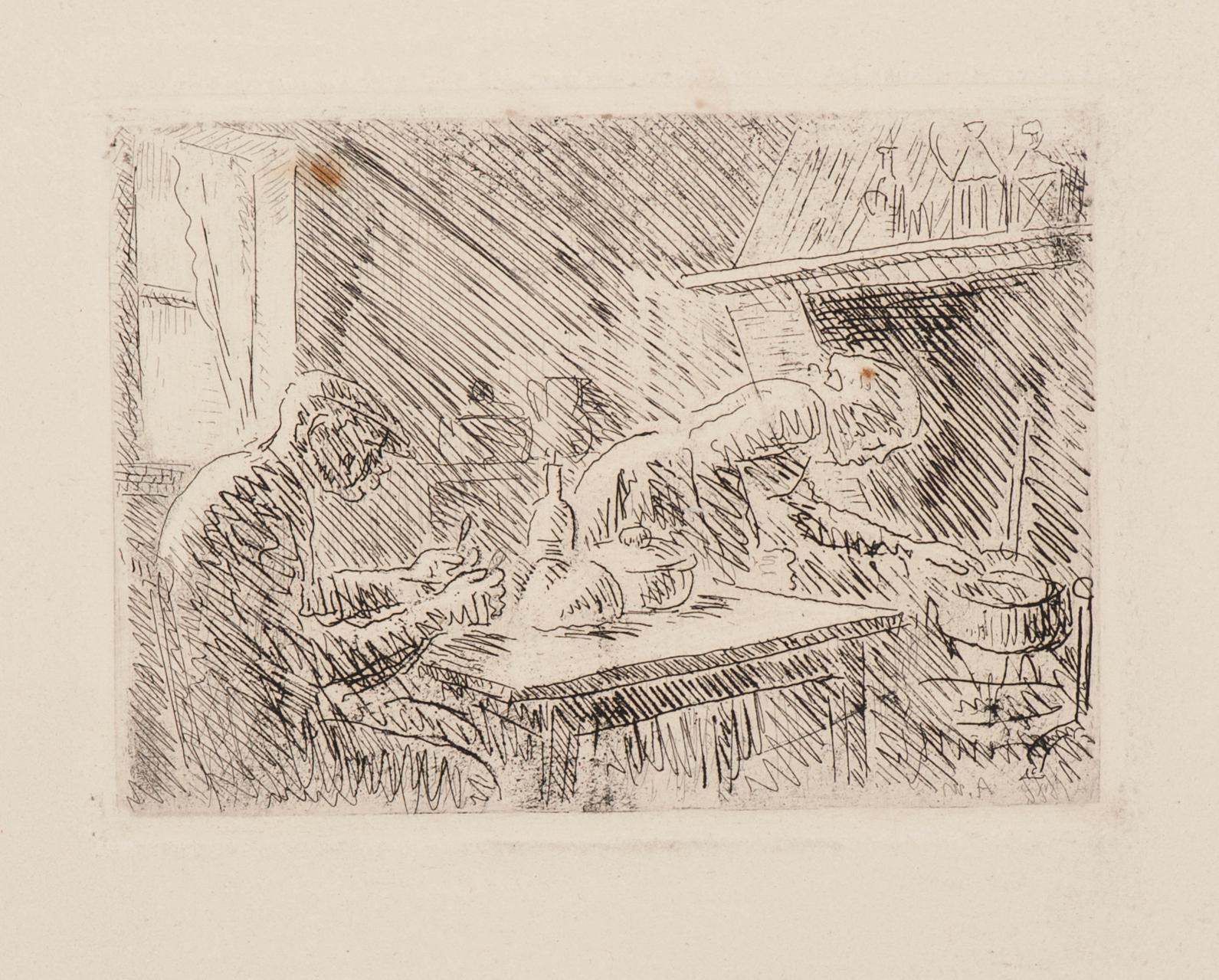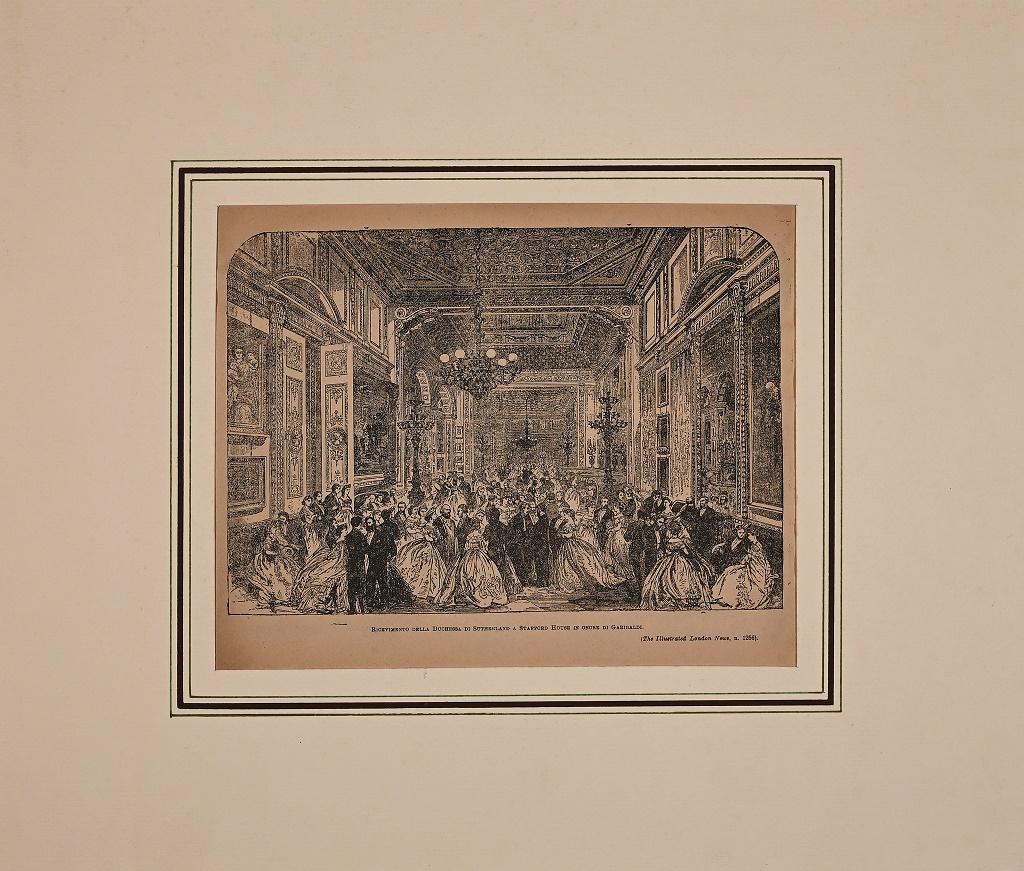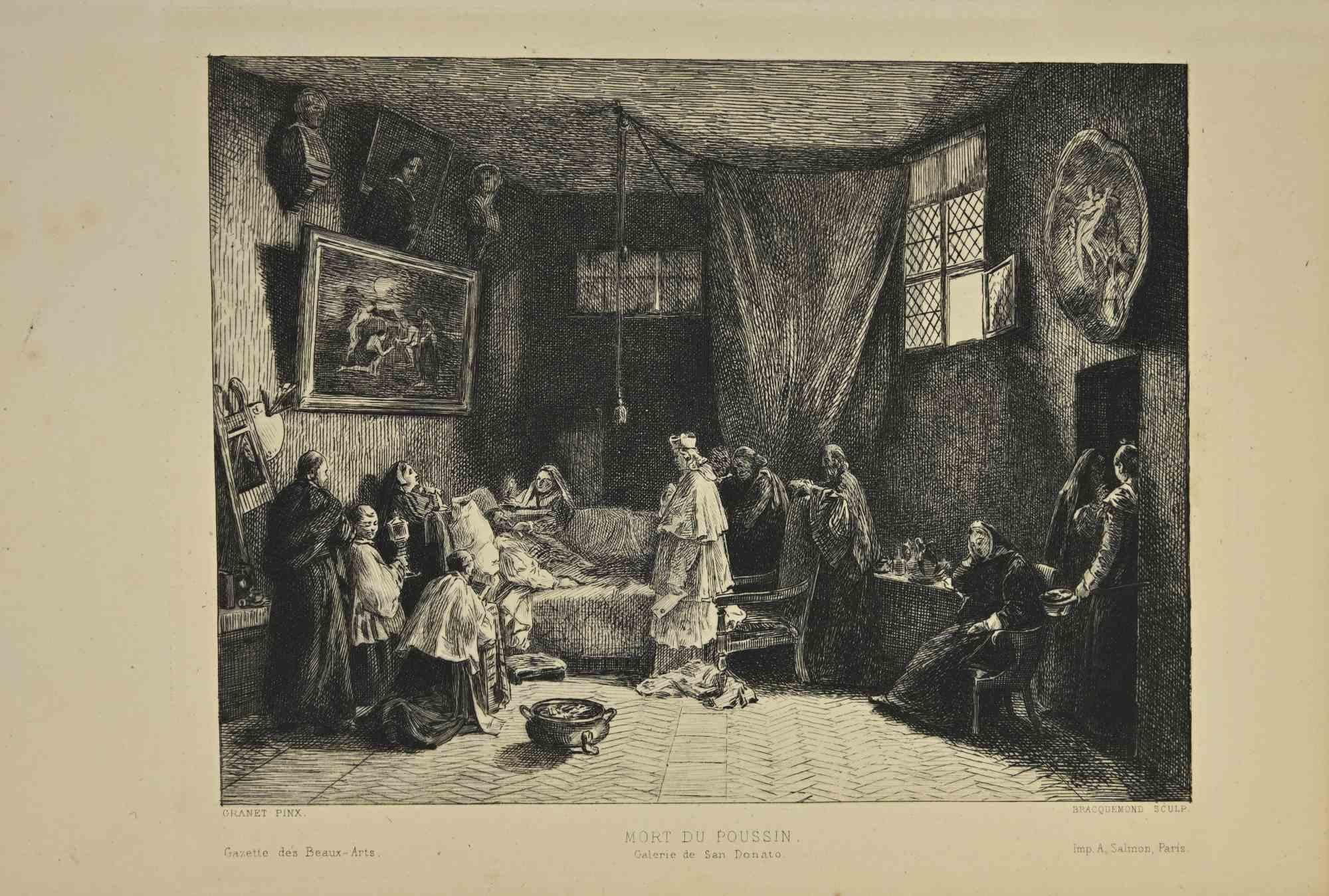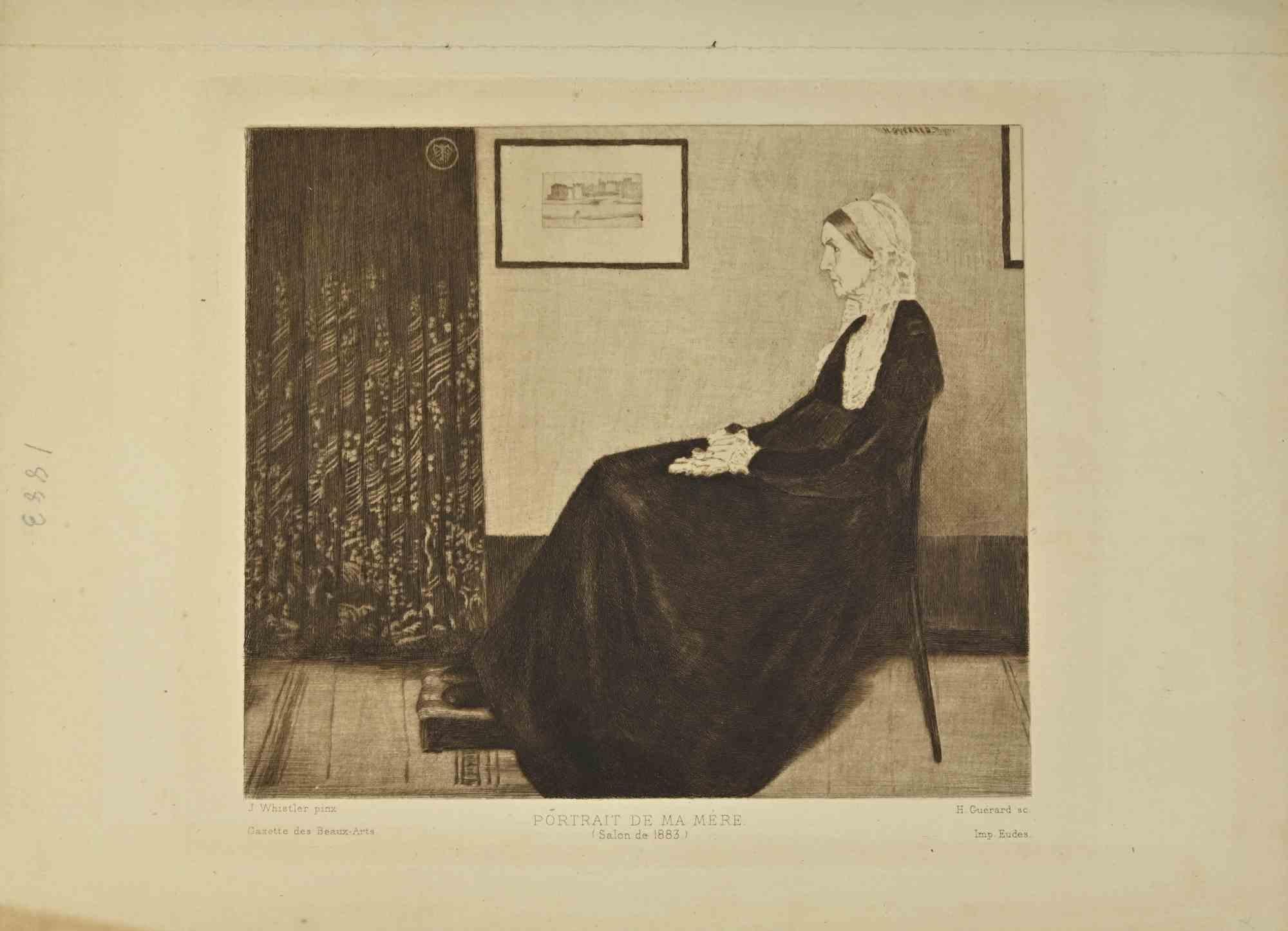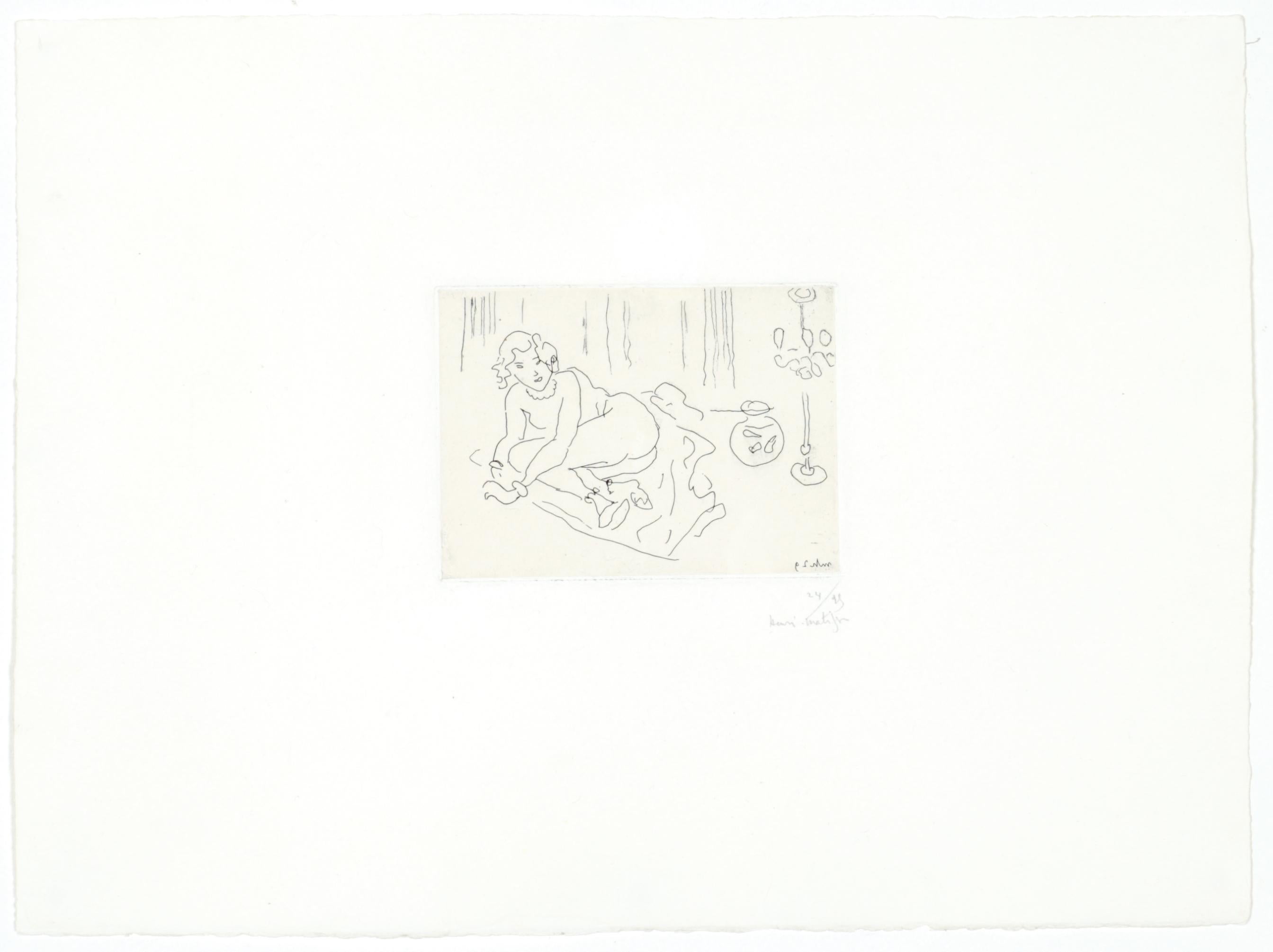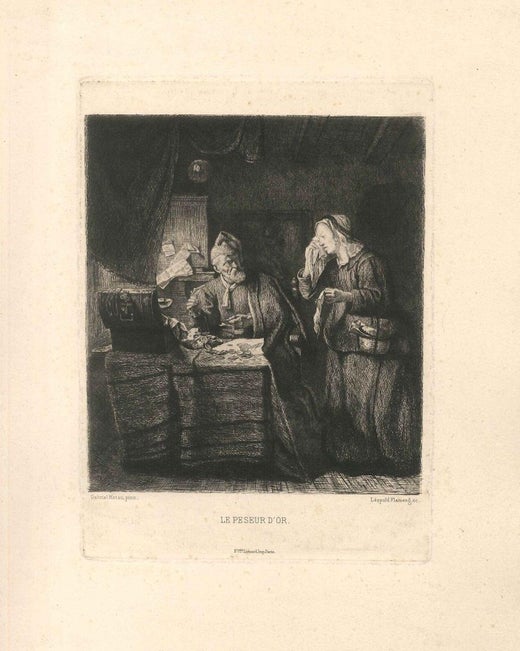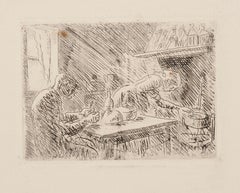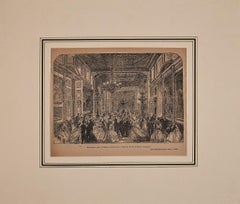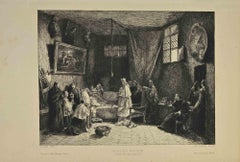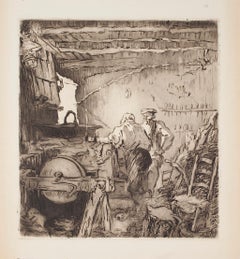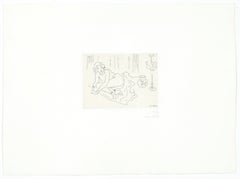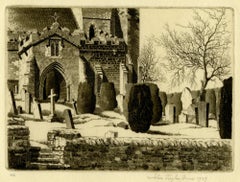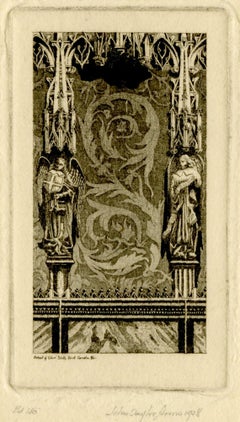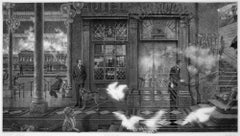Léopold FlamengLe Peseur d'Or - Original Etching by Léopold Flameng - 18731873
1873
About the Item
- Creator:Léopold Flameng (1831 - 1911, French)
- Creation Year:1873
- Dimensions:Height: 13.98 in (35.5 cm)Width: 10.95 in (27.8 cm)Depth: 0.04 in (1 mm)
- Medium:
- Movement & Style:
- Period:
- Condition:Insurance may be requested by customers as additional service, contact us for more information.
- Gallery Location:Roma, IT
- Reference Number:Seller: M-1007261stDibs: LU65034437331
Léopold Flameng
Leopold Flameng was a French artist, well-known for his etchings reproducing works by Jan van Eyck, Leonardo da Vinci, Rembrandt, Ingres and Delacroix, Boccaccio, Paul Scarron, Victor Hugo and François Coppée, producing one-hundred beautiful illustrations. Flameng at first studied with Luigi Calamatta and Jean Gigoux. His talent as an engraver was noticed by Charles Blanc, and his collaboration on the Gazette des Beaux-Arts with his fellow engraver Léon Gaucherel helped to improve the reputation of the publication. Flameng was a medallist at the Universal Exhibition (1878) and was elected member of the Academy of Fine Arts in 1898.
- ShippingRetrieving quote...Shipping from: Monaco, Monaco
- Return Policy
More From This Seller
View AllEarly 20th Century Modern Figurative Prints
Etching
1860s Modern Interior Prints
Etching, Paper
19th Century Modern Figurative Prints
Etching
1930s Modern Interior Prints
Paper, Etching
1880s Modern Figurative Prints
Etching
1880s Modern Figurative Prints
Etching
You May Also Like
1920s Modern Figurative Prints
Etching
Mid-20th Century American Modern Interior Prints
Handmade Paper, Etching, Aquatint
Mid-20th Century American Modern Interior Prints
Etching, Handmade Paper, Aquatint
1990s American Modern Interior Prints
Charcoal, ABS, Engraving, Etching
Mid-20th Century American Modern Figurative Prints
Etching
Early 20th Century American Modern Interior Prints
Etching
